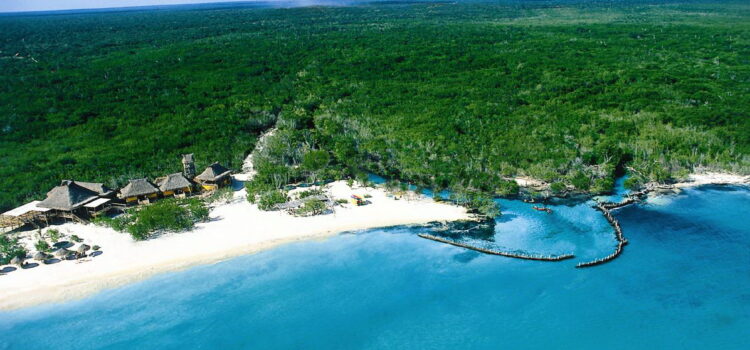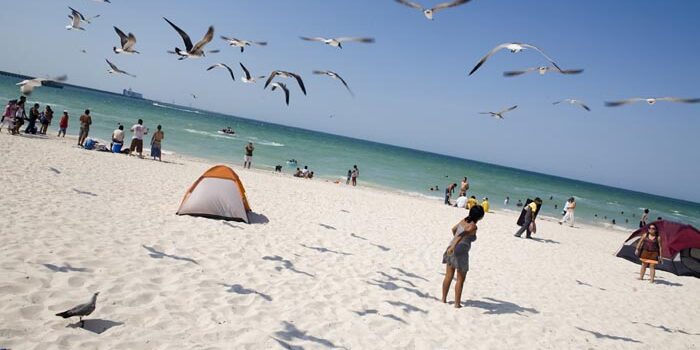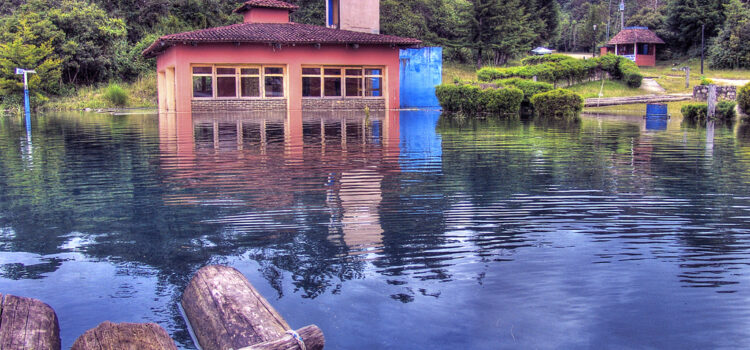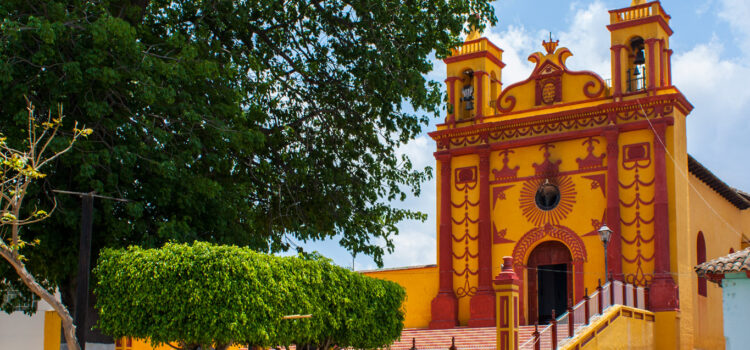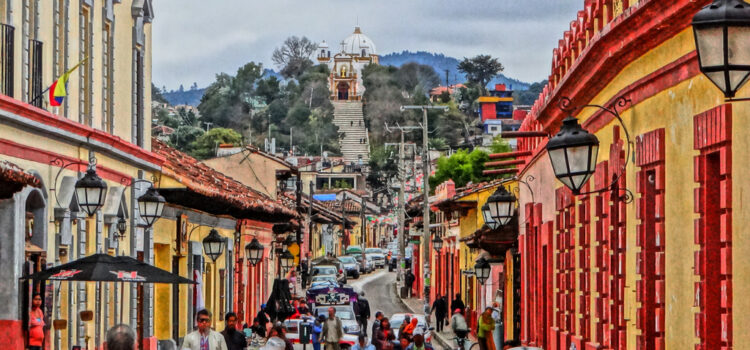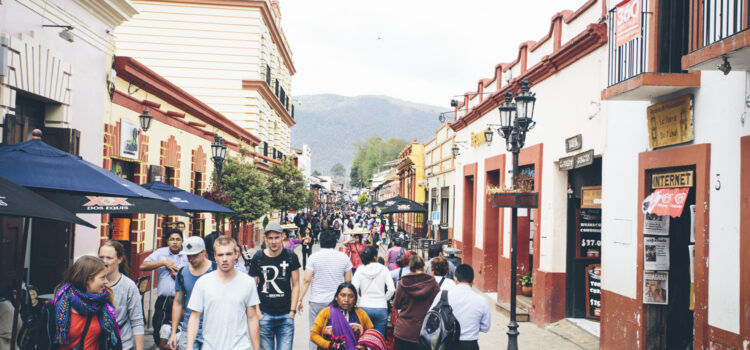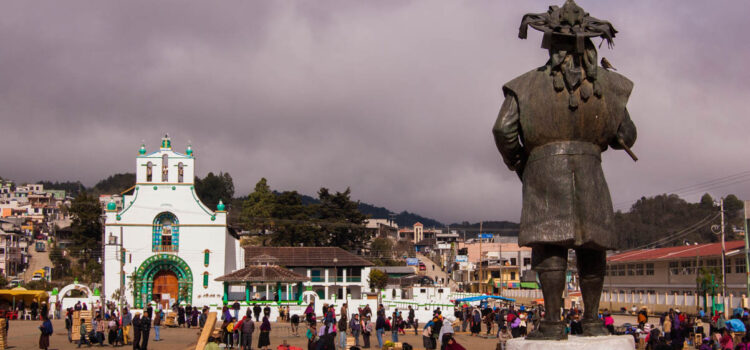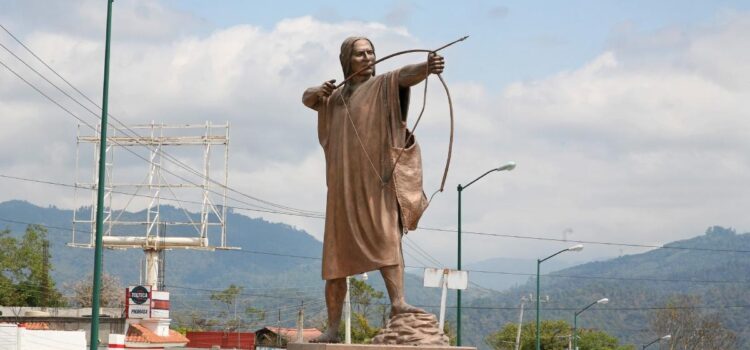Cobá
The town of Cobá is an excellent option to stay a few days and discover its fantastic surroundings soaking up Mayan culture. The road always offers interesting detours for all visitor profiles. Coba
The town of Cobá benefits from its strategic situation, as did the ancient Maya. The tranquil Mayan village of about 1500 inhabitants lives on foot between the Coba lagoon and one of the most remarkable ancient Mayan cities of the Yucatan Peninsula, Coba. Its strategic situation made it flourish for many years, as it happens today. The flow of tourists that arrive daily from Riviera Maya means that in the town and surrounding area there are businesses, handicrafts, restaurants, hotels, visits to tourist cenotes … strategic place Coba!
Punta Allen
Punta Allen is a fishing village located in the Sian Ka’an Biosphere Reserve, one of the most wild and natural areas near the Riviera Maya. Only the most adventurous go to Punta Allen.
Punta Allen is the fishing village at the end of the road that crosses the Sian Ka’an Biosphere Reserve from the mouth of Boca Paila in Tulum. After a dirt road of more than 50 kilometers you reach Punta Allen. It seems simple, but the road conditions sometimes take about 4 hours to get here, if the road is good, an hour and a half will suffice.
Few travelers stay at Punta Allen, most arriving on a day’s drive from the Riviera Maya. When tourists leave, Punta Allen returns to its usual calm.
Yaxunah
The village of Yaxunah is a great stop on your way to savor Mayan culture and history by visiting the archaeological zone, the community museum, bathing in the cenote LolHá and sleeping in a hammock in a traditional Mayan house.
One of the most interesting and complete visits of the ancient and ancient Maya world can be done in the town of Yaxunah. This interesting Mayan population unites interesting places for the traveler who likes to go to the most authentic places.
Progreso
Progreso is a quiet coastal town north of Merida that became the captain’s beach. Here they escape on weekends, especially on Sundays, to relax and spend the day at the beach bars.
Yucatan, Mexico. One knows that Progreso is the favorite beach of the Yucatecan captain when he crosses the road from Mérida to Progreso: it is the best by far the whole of the Yucatan Peninsula. Those of Mérida settled the trip to their Sunday break, no doubt. Progreso is the most important coastal town in the north.
It has vast beaches on a long seafront where you find restaurants. On the sand of the beach you will be able to dislike the flavors of the sea of this fishing village. It’s a sin to come to Progreso and not eat at the beach, give yourself that pleasure. Here Mexican families meet to spend the day of rest and vacation, especially in Easter and summer, although Christmas is also crowded.
Tziscao
In southern Mexico, in the surprising Chiapas region, we find the first protected area of this region, the Montebello Lagoons. Gaps of attractive colors in forests of enzymes and pines.
Montebello National Park Lagoons, Chiapas, Mexico This easy-to-dissolve karst land rewards us with another natural phenomenon that made ancient cenotes transform into these lagoons of turquoise, blue, emerald water … a further spectacle of the nature of our Planet.
The Lagoons of Montebello form a set of more than fifty lagoons that emerge between pines and oaks, lagoons of beautiful colors, what a beautiful place! This natural spot is not ready to hike on your own to the innermost lagoons, so many are not within reach. You can go with a guide to venture to more distant ones.
Comitán de Domínguez
Near the border of Chiapas with Guatemala we find one of the cities with a more beautiful colonial center. Without the tourist influence that receives its neighbor San Cristóbal de las Casas, lives a population of the most authentic, a good stop along the way.
Comitán is one of the Magical Peoples of Mexico, a distinction that recognizes cities that work to preserve and protect their cultural wealth. No doubt the comitecos do. San Cristóbal de las Casas, the undisputed queen of Chiapas, makes Comitán, barely an hour away, remain discreet under its long shadow.
San Cristóbal de las Casas
In the region of Chiapas, in Mexico, there is a population that seduces with passion to the travelers that approach until here. San Cristóbal de las Casas combines all the ingredients to make it part of those places you can not miss.
San Cristóbal de las Casas quickly wins the sympathy of those who visit it: from the independent traveler, those of organized groups, backpackers, travelers in search of culture, adventure, rest … in San Cristóbal we all find our corner and we end up enchanted with the place. It is considered one of the Magic Villages of Mexico, no doubt.
And what will San Cristóbal de las Casas have? It is beautiful, is colonial and is located at more than 2000 meters of altitude surrounded by mountains. One of the factors that most attracts the traveler is the coexistence between foreigners and locals in an indigenous environment of Tzotziles and Tzeltales, the two Mayan majority ethnic groups of the Highlands of the region, who move daily from the vicinity of San Cristóbal, and Be it to offer crafts in the streets, sell your products in the market, go down to buy, visit someone …
Palenque
Palenque does not need presentations, it is the places that for beauty and history is part of the traveler’s univeral retina. When you visit it you immediately feel the power of the magical Mayan city of Palenque, a must see.
Late Classic (600-900 AD) Temple of the Inscriptions and Palenque Palace is the most visited ancient Mayan city of Chiapas, the undisputed queen of this attractive Chiapas state, undoubtedly takes the crown. Palenque, during its period of splendor, during the so-called Mayan Classic period (250 AD-900 AD) dominated much of the territory and was one of the driving cities of this great civilization. It is one of the most beautiful Mayan precincts at the architectural level because its governors, above all Pakal and the son who succeeded him, Kan Balam, raised a city full of beauty and careful details throughout their fruitful reigns. Here are several figures, censers, inscriptions … and, of course, the tomb of Pakal, located in the very heart of the Temple of Inscriptions … in fact, this temple comes to be like a mausoleum, it is not the only tomb There are. All this gives us valuable information to reconstruct this puzzle of pre-Hispanic history, which has been erased and looted so much.
San Juan Chamula
San Juan Chamula is home to 60,000 Tzotzil Mayans, a world apart from traditions and culture. In the temple dedicated to San Juan Bautista we can observe the surprising rituals that they practice, a syncretic mixture of Christianity and Mayan beliefs.
The vast majority of those who have visited San Juan Chamula get the impression of having been in a unique and special place, and so it is. Chamula is tourist, in the sense that there are few travelers that travel through the state of Chiapas in Mexico and do not come here. The extraordinary thing is that in spite of the constant drip of travelers, San Juan Chamula survives practically impermeable to the foreign influence. And by foreigner I also mean Mexican.
Why is San Juan Chamula different?
San Juan Chamula is home to 60,000 Tzotziles. This town is governed by different rules. No Mexican police corps enters here: neither the army, nor the municipal, nor the federal, nor the navy … they have their own police, do not pay taxes, nor change the time with the rest of Mexico. There are also no hotels and the foreigner must leave before 6 pm.
Ocosingo
Toniná is one of the great ancient Mayan cities. We protected by the beautiful valley of Ocosingo, the heart of Chiapas, discovered this magnificent city of more than a thousand years of occupation. Late Classic (600-900 AD.) Tonina, large stone house in Tzeltal Maya, was influenced by other ethnic groups such as the Olmec and Toltec, something we see in other Mayan cities. The peoples, the different cultures, we have been influencing throughout the whole of Humanity, and the Mayan civilization was not exempt of the natural territorial influences. Part of this is seen in its architecture, such as the greasy stepped spiral that we recognize from the puuc style of the Yucatan Peninsula, or the god Chaac.


